It’s Monday morning, and you are about to send a status update to your project team and sponsor. You pull up your project tracking resources and…nothing. Now, you’ll spend the next few hours emailing, texting, pinging, or calling your project team to submit their timesheets so you can send your status report.
I think as project managers we have all sung this same tune. Let’s face it – even with the best intentions, we’ve probably forgotten our own time sheets a time or two. The time-tracking application may even be up on your screen, but a few urgent emails or client calls later, and the task is forgotten.
In today’s technology-induced and distracting world, our attention spans are flooded with task-switching overload. One best practice to combat this, while also driving positive employee engagement and increased productivity, is the use of a technique known as Gamification.
In this blog we will review Gamification as a Time Tracking Best Practice and what elements to include for proven success when creating for your team.
What is Gamification?
Gamification is not simply making a game out of something; it is using specifically designed methods – game mechanics — to tap into the reward center of our brains and provide positive reinforcement (by way of an uplifting dopamine release)1 for completing a task. It enables opportunities to fuel both intrinsic and extrinsic motivation factors within us. Small Business Trends2 provides a great explanation for gamification: “A process for integrating game mechanics into something that already exists to motivate participation, engagement, and loyalty. This can be almost anything, from your website to social media presence, day-to-day operations, customer engagement and more.”
Gamification may seem like a trendy buzzword especially when the concepts reference digital examples, but its benefits have been around for several hundred years. The theory was first introduced by Russian Scientist, Dmitri Mendeleev, during the 19th century3. Mendeleev used his interest in playing cards to help him understand and categorize elements by arranging and listing the information on each card. He was able to turn a mundane task into something that held his attention; this research helped him create the first publication of the Periodic Table of Elements.
From scientific discoveries to updating a timesheet, gamification could be…wait for it… a game changer.
Gamification for Time-Tracking
There are ten primary game mechanics in gamification: Fast Feedback, Transparency, Goals, Badges, Leveling Up, Onboarding, Competition, Collaboration, Community and Points4.
Each has their place to help motivate your employees with different incentives and engagement goals. They can be used together or separately. The seven game mechanics mentioned below have been specifically curated to help with the dreaded timeclock blues – how to increase timesheet compliance and get your employees motivated to submit their timesheets.
Fast Feedback
The first helpful time tracking best practice to remember in gamification is providing fast feedback.
We all love encouragement, especially when it is coupled with instant gratification. The use of notifications tied to your timesheet application can help your employee or project team member feel a sense of accomplishment and provides a quick pat-on-the-back to reinforce that they are doing a good job.
- Many applications can be configured to use workflow rules integrating third-party apps such as Slack or coded right into the tool itself. When an employee enters their time for the week, they’ll have an instant note saying they are a time-keeping rock star.

Badges and Leveling-Up
The next helpful time tracking best practice in gamification is rewarding with badges and level-ups.
Badges are tangible evidence that someone is performing well. Coupled with leveling-up, a great partner to badges, employees can proudly display their continuous, long-term achievements. Badges can be awarded during staff meetings or individually shared out by members in a department message board or team discussion post. They can be tailored to your company culture and provide an opportunity to get really creative.
Fitbit has done a great job using badges in a unique way to help motivate the number of steps a person should take each day (Have you earned your Great Wall of China badge yet?) Similar badges can be created with the theme of time logging:
You’ve logged enough time to have watched every episode of Game of Thrones

You’ve logged enough time to have read the Encyclopedia Britannica

You’ve logged enough time to have traveled to Mars in 1965 via the Mariner 4
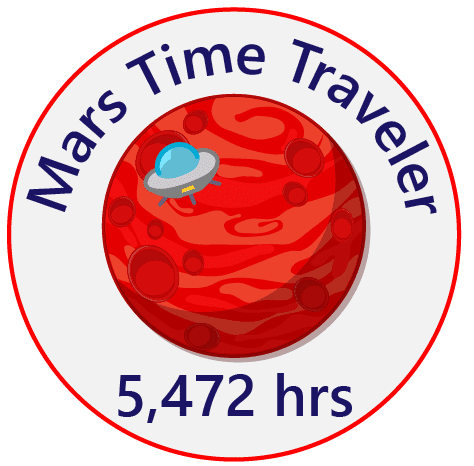
Create several levels of badges for employees to proudly display they are hitting their goals and then some – helping you to rack up more even points with this incentive:
Congrats! You have leveled-up to a Quarter-Time Warrior. Thank you for submitting each timesheet for the quarter by Friday afternoon.
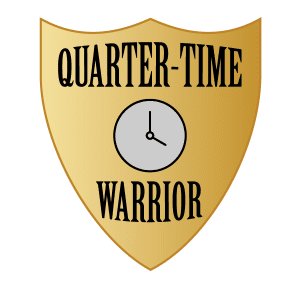
Whoa! Watch out! You are a Six-Month Slayer. Thank you for submitting each timesheet for the first half of the year on time.
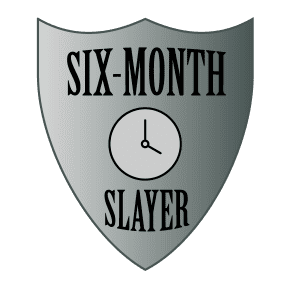
Goals
Another helpful time tracking best practice to remember in gamification is creating goals.
Goals help us know what is expected of us and how we are being measured. This game mechanic can be used in several different ways to motivate both individuals and managers of teams. Determining the key performance indicators that the team should be striving for is the first step. Then, input this data into your Project Portfolio Management (PPM) tool so employees and their leaders can monitor their progress on achieving their goals.
- Below is an example from Clarizen, a SaaS-based PPM tool, which shows how KPIs and goals can be easily reported:

Competition and Transparency
Continuing on, a helpful time tracking best practice to remember in gamification is creating plenty of competition and transparency.
Competition can be a great game mechanic to drive participation and engagement for timesheets, especially when paired with another game mechanic, Transparency. By showing others how well they are performing in comparison to their peers, they will be motivated to have a friendly competition to improve their rank. This can be at an individual level as well as between managers of different groups within a larger organization.
- The image below shows an example dashboard you might build within your PPM or time tracking tool’s reports module to be shared with various user groups. This shows where the user ranks for their individual timesheet compliance, department timesheet compliance, and then an overall leader board.
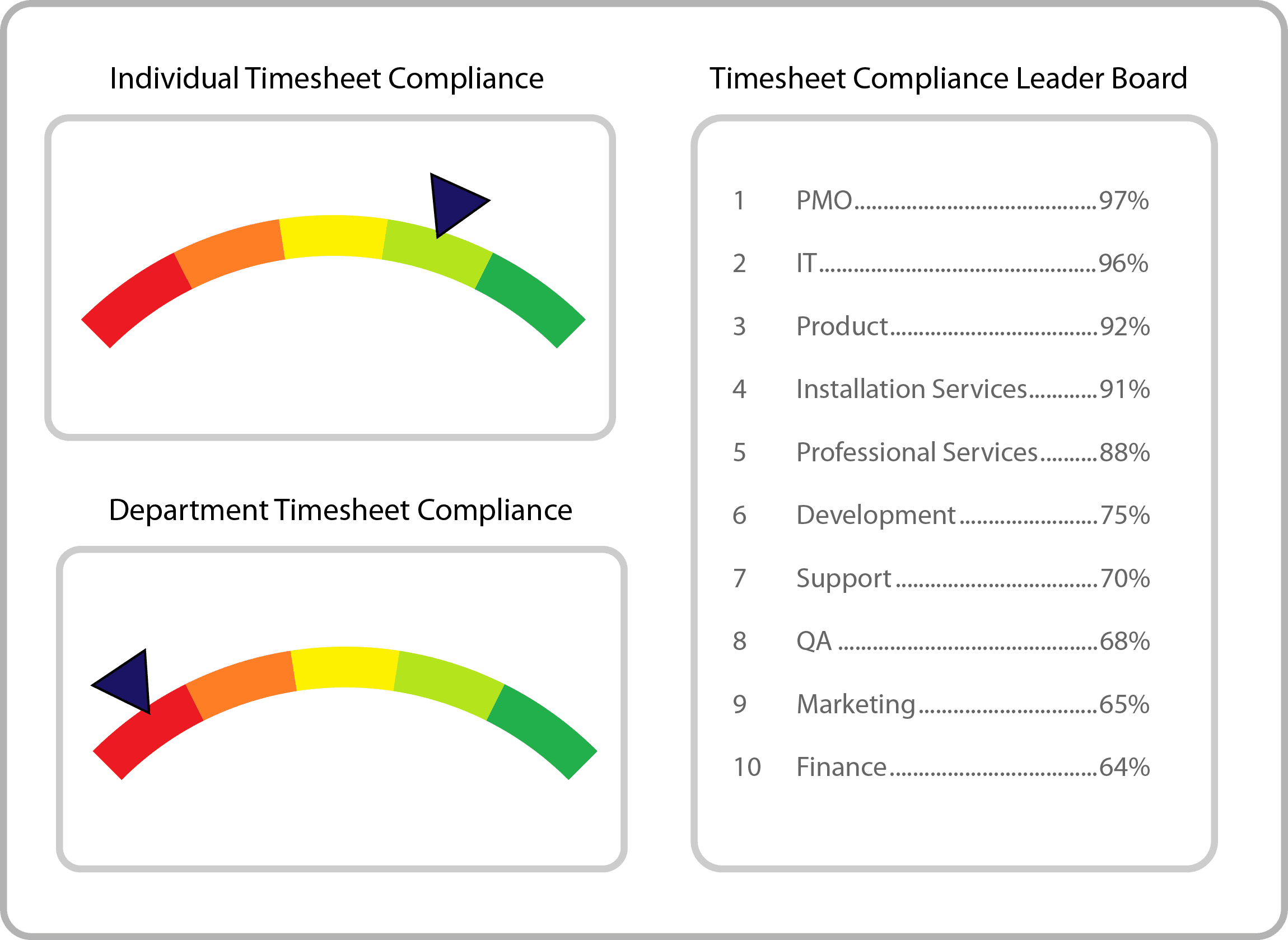
Community
Another helpful Time Tracking best practice in gamification building a community.
Community caters to our innate feeling of belonging. It is why we are curious about what is happening with our favorite celebrities, the occasional check-in on acquaintances using social media, and the reason happy hour invites are well received. This game mechanic can be applied to help timesheet engagement by augmenting the earlier mentioned game mechanics of Transparency, Badges, and Goals. By seeing the progress of peers, employees can set their sights on their next badge to conquer or cheer on others to help reach individual and department goals.
Use your PPM tools collaborative features to allow team members to share their achievements. If your current PPM tools do not offer a social post feed, there are other popular instant message apps such as Teams or Slack that can be used for sharing and allowing others to join in on the congratulations.
The same collaborative tools can be used to help provide a platform for the community to join in and share where the team stands on timesheet submittal progress, promoting a team approach to achieving the overall compliance goal.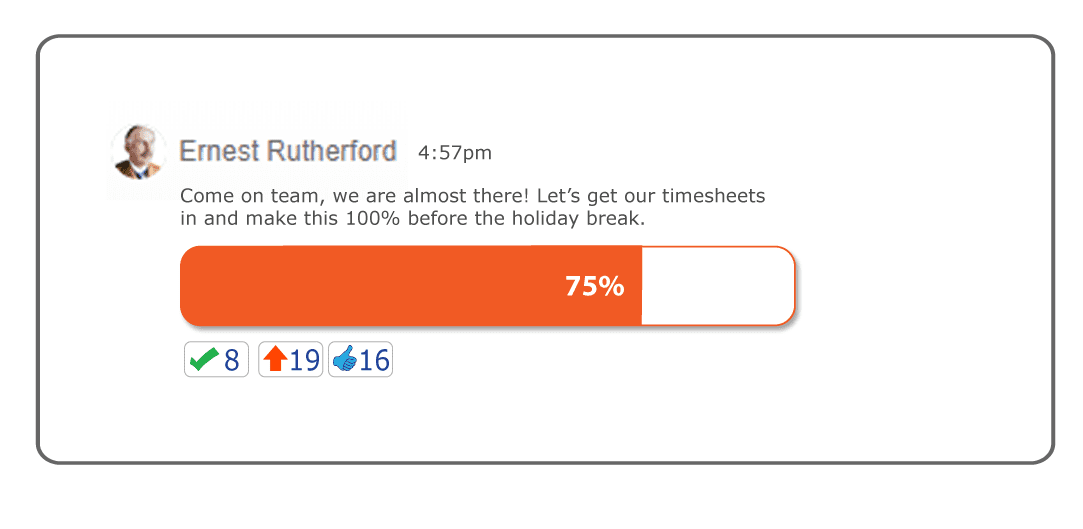
Conclusion
Gamification is not a new term, but its benefits can be realized more easily than ever using today’s technology. It can be a great resource to help you conquer the mundane or easily forgotten tasks – like the ill-fated timesheet entries. By applying gamification and game mechanics, you can also provide an opportunity to foster a greater sense of community and company culture, more transparency into department-wide goals, and increased engagement with your team. Game on!
Next Steps
Contact Us to learn more about our Project and Change Management Services and what tools will help you achieve your time-tracking goals.
Be sure to follow us on Twitter, LinkedIn, and YouTube, and use #KolmeGroup on shared posts!
Cited Sources:
